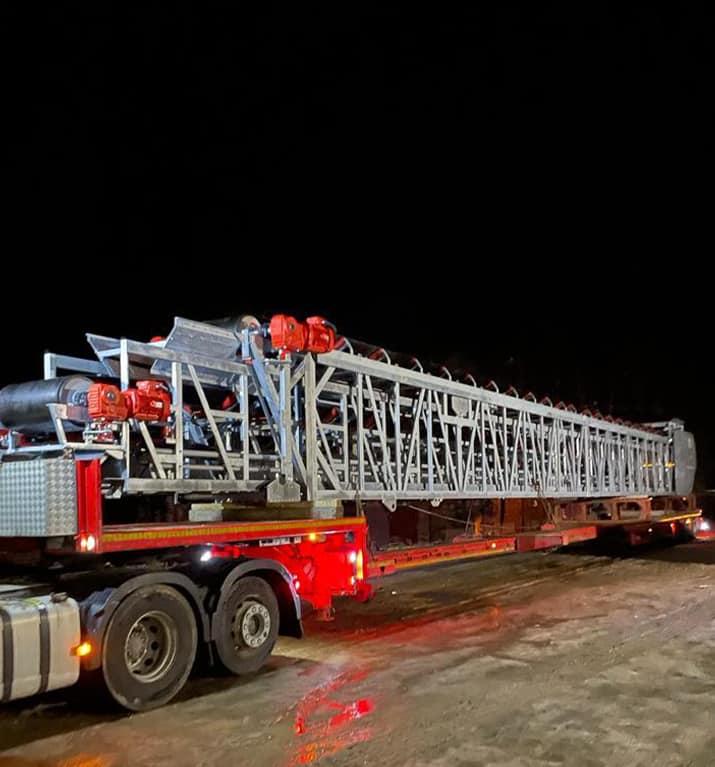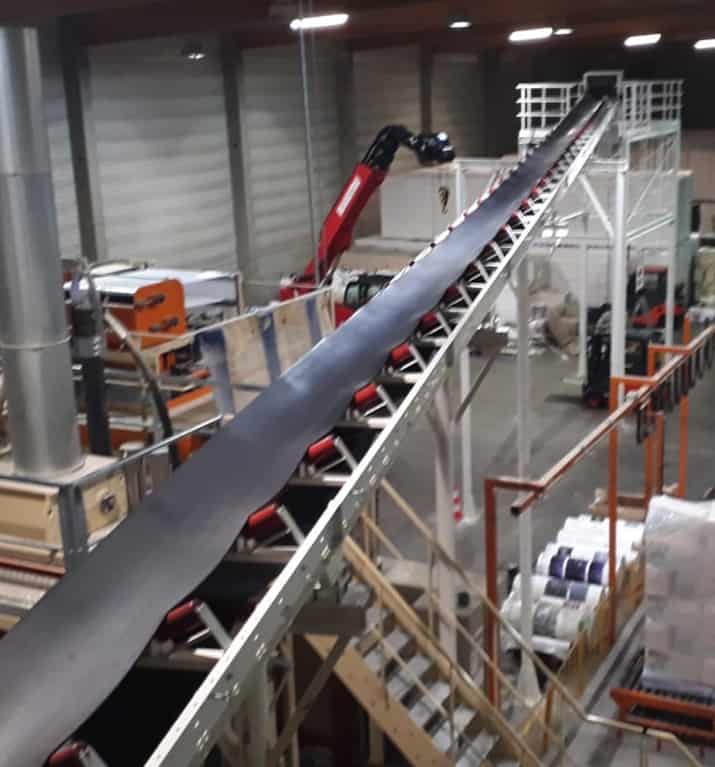These industries require conveyors designed to handle wood logs, pulp and other materials with precision and reliability. Here’s how conveyors are used in the wood and paper industry:


Conveyors transport logs from the forest or log yard to sawmills or processing facilities. This initial stage is critical for efficient lumber production.
Conveyors transport wood chips and pulpwood to chippers and pulping equipment. They play a crucial role in feeding raw materials into the pulping process for paper and board production.
After pulping, conveyors move the wet pulp or chips to drying equipment. Additionally, they assist in sorting and classifying the dried wood products based on size, quality, and grade.
Conveyors are used in the production of wood pellets, transporting wood shavings, sawdust, or wood chips to pelletizing machines, dryers, and packaging lines.
In facilities generating biomass energy, conveyors transport wood waste and biomass materials to boilers for combustion.
Conveyors transport wood chips and pulpwood to pulp mills, where they are processed into pulp for paper production.
Conveyors move pulp through various stages of processing, including cooking, bleaching, and refining, to produce high-quality pulp suitable for papermaking.
Conveyors deliver pulp from stock preparation areas to the paper machine. They feed the pulp onto the paper machine’s forming section, where it is transformed into paper.
Conveyors are employed in recycling facilities to handle recovered paper and cardboard materials, including sorting, baling, and transporting recyclable paper products for reuse.
Conveyors move waste materials, such as paper trimmings and rejected products, to waste disposal or recycling facilities, reducing waste and promoting sustainability.
In both the wood and paper industries, conveyor systems are essential for maintaining production efficiency, reducing manual labor, and ensuring the seamless flow of materials throughout the manufacturing process. These industries often require specialized conveyor systems that can handle the unique characteristics and challenges posed by wood logs, pulp, and other materials involved in their processes.


